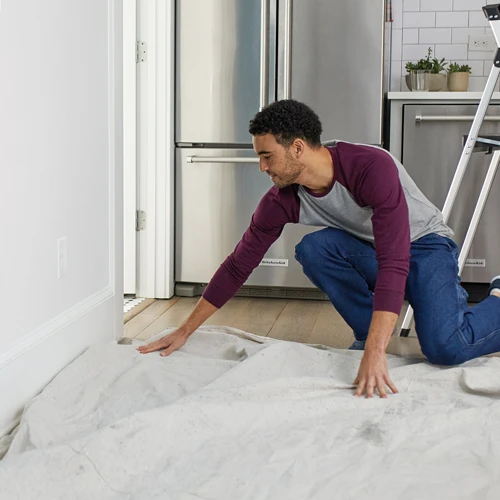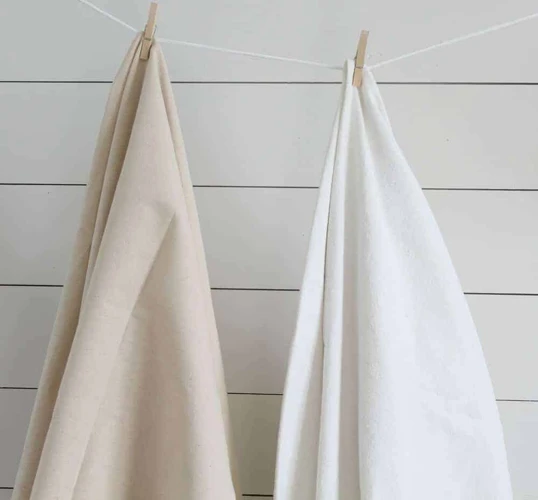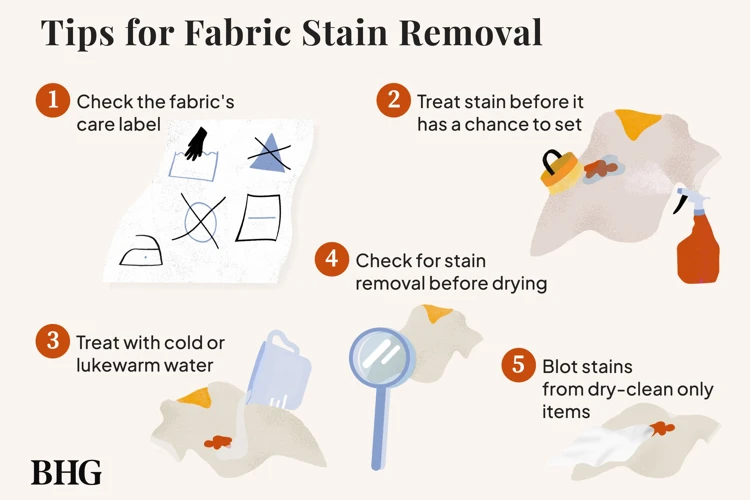Welcome to the world of drop cloths, an essential for anyone looking to protect surfaces during projects. Whether you’re painting a room, refinishing furniture, or engaging in a craft, drop cloths act as a barrier between your work and the rest of your space. In this post, we’ll dive into everything you need to know about these versatile protectors.
The Importance of Protective Drop Cloths
When embarking on a project, the significance of protective drop cloths cannot be overstated. They save time on cleanup and protect your floors, furniture, and other surfaces from spills, splatters, and debris. This simple addition to your toolkit can prevent costly damage and maintain the integrity of the spaces you cherish.
Types of Drop Cloths
Different tasks require different types of drop cloths. By understanding the various kinds available, you can make an informed decision on which suits your needs best.
Canvas Drop Cloths
Canvas drop cloths are esteemed by professionals and DIY enthusiasts alike for their durability and reusability. Made from tightly woven cotton or a cotton-poly blend, these cloths are absorbent and less prone to rips or tears, making them ideal for repeated use in painting projects.
Plastic Drop Cloths
Lightweight and disposable, plastic drop cloths are perfect for quick jobs or protecting furniture and fixtures. They’re waterproof, which means spills won’t seep through, but they’re also less durable than other materials and can be slippery underfoot.
Heavy-Duty Drop Cloths
For larger-scale projects or when extra protection is needed, heavy-duty drop cloths come to the rescue. These are often made of strong materials like canvas with additional layers or coatings to resist punctures and handle rougher use.
Waterproof Drop Cloths
Waterproof drop cloths are essential when dealing with liquids beyond just paint. These can be made from plastic or treated canvas materials, ensuring that no moisture gets through to the surfaces below.
Leak-Resistant Drop Cloths
Leak-resistant drop cloths offer a middle ground between absorbent and waterproof options. Typically made with a layered design, they can contain spills while also preventing them from spreading or leaking through.
Choosing the Right Drop Cloth for Your Project
With so many choices available, selecting the right drop cloth can seem daunting. To ensure you pick the best option, consider the specifics of your project and the level of protection required.
Understanding Drop Cloth Sizes
Drop cloth sizes vary, and it’s essential to choose one that will adequately cover your workspace. They come in dimensions as small as a few feet to as large as room-sized pieces. For larger areas, you may need to overlap multiple drop cloths to ensure complete coverage.
Features of Painting Drop Cloths
When selecting painting drop cloths, look for ones with absorbent materials to minimize paint tracking. Features like stitched edges or grommets for securing the cloth in place can also be beneficial.
Benefits of Washable Drop Cloths
Washable drop cloths, particularly those made of canvas, offer the benefit of long-term use. After your project is complete, you can clean them for reuse, making them a cost-effective and eco-friendly option.
Drop Cloth Uses Beyond Painting
Drop cloths are not just for painting; they have a variety of uses across many scenarios.
Protective Uses in Various Scenarios
- Moving: Protect floors and furniture from scratches and dirt.
- Renovations: Keep dust and debris contained during home improvements.
- Gardening: Collect soil or leaves for easy cleanup.
Alternative Creative Uses for Drop Cloths
Beyond their protective uses, drop cloths can be repurposed for creative endeavors. They can serve as a blank canvas for a DIY rug, be sewn into unique curtains, or even be used as a backdrop for photography.
Caring for Your Drop Cloths
Maintaining your drop cloths correctly can extend their life and save you money over time.
How to Clean and Maintain Your Drop Cloths
For canvas and washable drop cloths, shake out any debris before laundering. Use mild detergent and avoid fabric softeners to maintain their absorbency. For plastic drop cloths, simply wipe clean or recycle after use if they’re too soiled.
Storing Drop Cloths for Longevity
To prevent mold and mildew, ensure your drop cloths are completely dry before storing. Fold them neatly and store in a dry, cool place away from direct sunlight to avoid deterioration of materials.
DIY Projects with Drop Cloths
Unleash your creativity with DIY projects that transform drop cloths into something new and exciting.
Innovative Crafting and Upholstery Ideas
With some imagination, drop cloths can become slipcovers for furniture, custom tote bags, or even artistic tapestries. The sturdy fabric of a canvas drop cloth is particularly well-suited for such upcycling projects.
Conclusion
Drop cloths are a versatile tool that can serve various functions, from protection during painting to creative crafting materials.
When undertaking any painting project, it’s crucial to protect your space. That’s where drop cloths come in handy. To learn about the various benefits and uses, check out our comprehensive guide on the benefits of canvas drop cloths. And if you’re new to using paint sprayers, our Paint Sprayers 101 article is an excellent resource to get you started. For the creative DIYers, don’t miss our 5 ways to use chalk paint in your home for a fresh and trendy look. All these resources are designed to help you achieve professional-looking results in your own home improvement projects.
Maximizing the Effectiveness of Your Drop Cloths
By selecting the right type for your needs, caring for them properly, and exploring their uses beyond the traditional, you can maximize the effectiveness of your drop cloths. They’re an investment in your home, your projects, and your creativity.


